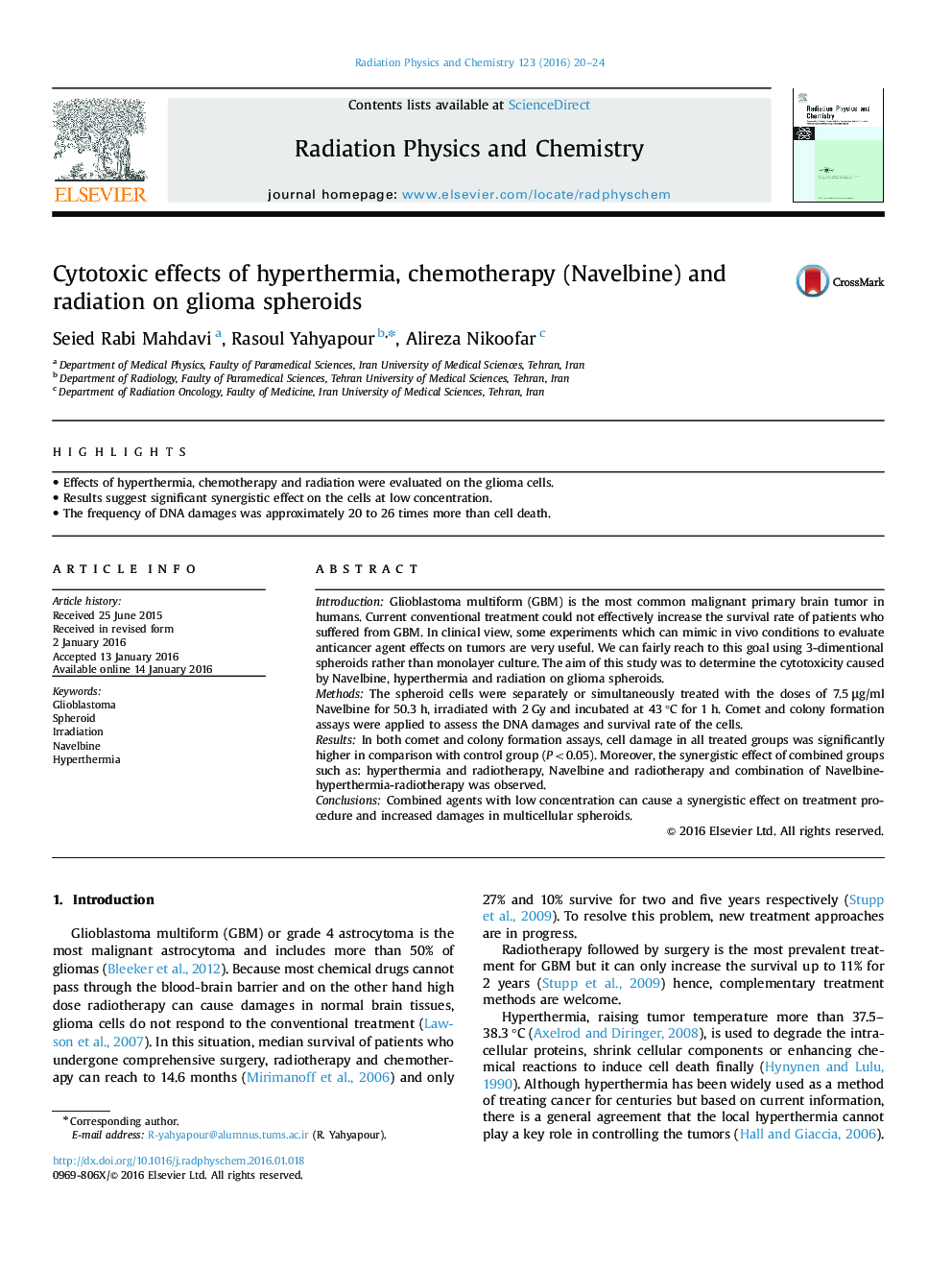| کد مقاله | کد نشریه | سال انتشار | مقاله انگلیسی | نسخه تمام متن |
|---|---|---|---|---|
| 1882177 | 1533501 | 2016 | 5 صفحه PDF | دانلود رایگان |

• Effects of hyperthermia, chemotherapy and radiation were evaluated on the glioma cells.
• Results suggest significant synergistic effect on the cells at low concentration.
• The frequency of DNA damages was approximately 20 to 26 times more than cell death.
IntroductionGlioblastoma multiform (GBM) is the most common malignant primary brain tumor in humans. Current conventional treatment could not effectively increase the survival rate of patients who suffered from GBM. In clinical view, some experiments which can mimic in vivo conditions to evaluate anticancer agent effects on tumors are very useful. We can fairly reach to this goal using 3-dimentional spheroids rather than monolayer culture. The aim of this study was to determine the cytotoxicity caused by Navelbine, hyperthermia and radiation on glioma spheroids.MethodsThe spheroid cells were separately or simultaneously treated with the doses of 7.5 μg/ml Navelbine for 50.3 h, irradiated with 2 Gy and incubated at 43 °C for 1 h. Comet and colony formation assays were applied to assess the DNA damages and survival rate of the cells.ResultsIn both comet and colony formation assays, cell damage in all treated groups was significantly higher in comparison with control group (P<0.05). Moreover, the synergistic effect of combined groups such as: hyperthermia and radiotherapy, Navelbine and radiotherapy and combination of Navelbine-hyperthermia-radiotherapy was observed.ConclusionsCombined agents with low concentration can cause a synergistic effect on treatment procedure and increased damages in multicellular spheroids.
Journal: Radiation Physics and Chemistry - Volume 123, June 2016, Pages 20–24